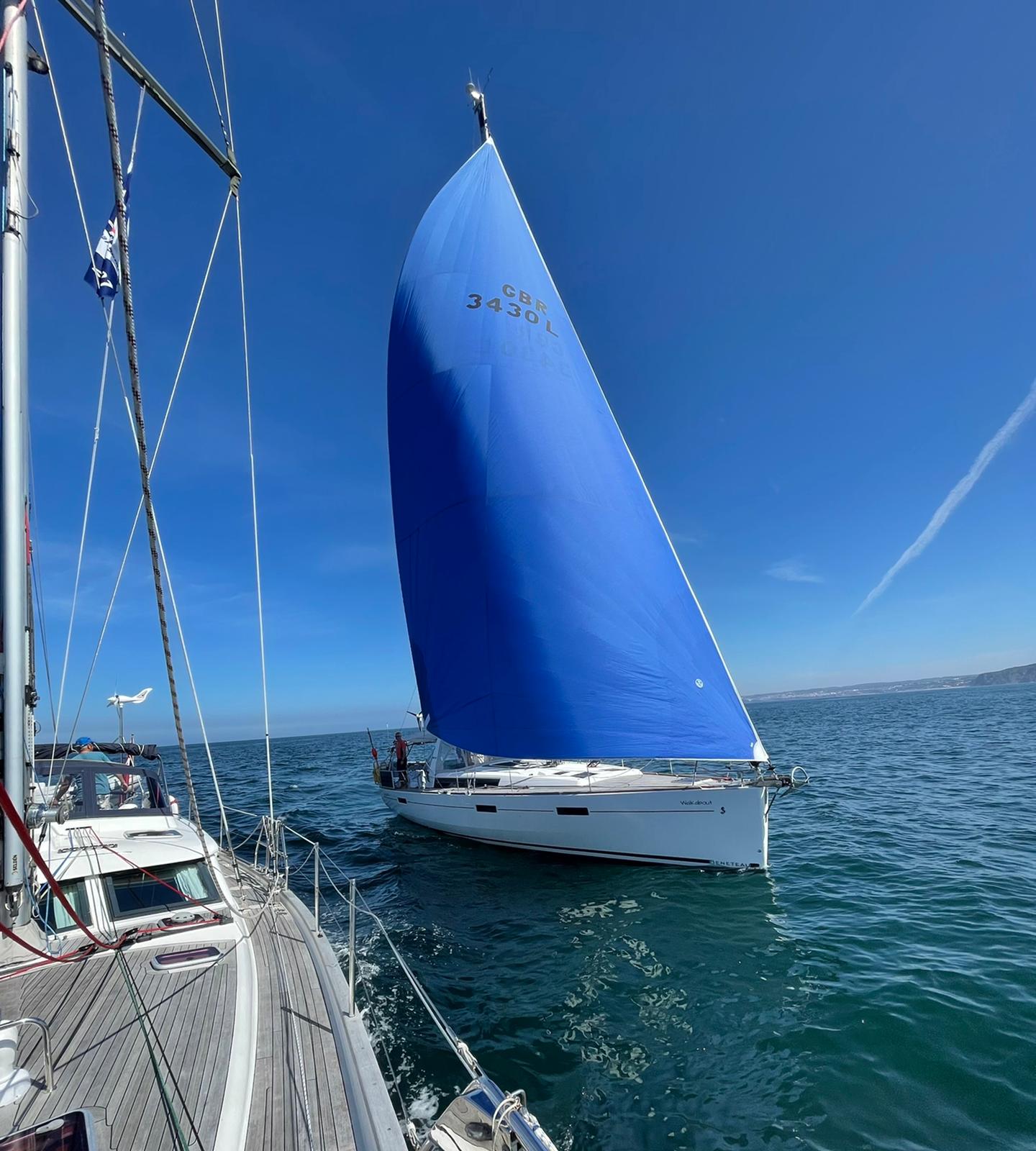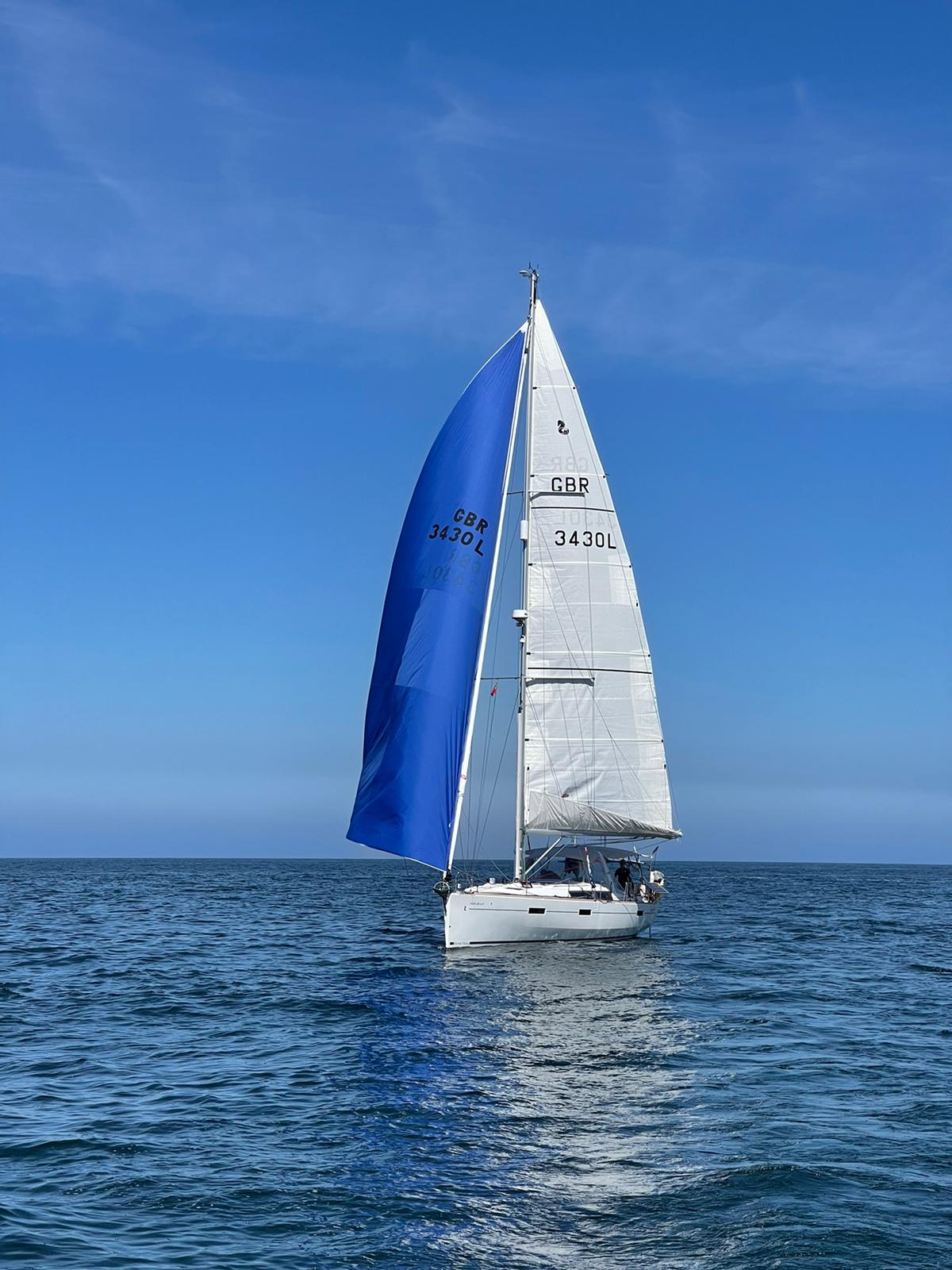Porto to Cascais

Walkabout has gone Sailing
Andrew and Traci Roantree
Sat 4 Sep 2021 13:39
38:41.7N 9:24.8W There are a series of easy day hops down the coast (50-60NM a day). But looking ahead at the weather, we decided to make a slightly longer passage to get to an area of safety ahead of the potential for some strong southerlies in the coming days. Cascais became our target - with a large marina and good anchorage. This is an overnight passage, likely to take about 26 hours. Since we have been on this coast there has been little wind. In theory, the 'Portuguese Trades' should be blowing now. This is a fairly steady and predictable northerly that blows down the Atlantic coast - just not this year! So we are trying to pick and choose days where there may be some useful wind. We left Douro Marina at 1230 on Friday 3 September 2021, with a perfectly executed (though I say it myself!!) 'bow spring' to get us off the pontoon. Exiting the mouth of the river we were happy to find that there was wind! We set sail with full main and genoa on a close reach down the coast. There are several things to look out for down this coast...
The first 2 are an occupational hazard of sailing coastal waters. The third is a really unwelcome feature of the Portuguese and Spanish coasts that has developed over the last few years. For unknown reasons, groups of Orcas (Killer Whales) have started 'interacting' (aka attacking) sailing boats. Some boats have suffered serious damage including having their rudders ripped off, rendering them helpless at sea. Others have started taking on water and in need of rescue by the Coast Guard. We pay close attention to dorsal fins that break the surface close to the boat. Happily, the only ones we have seen so far have been of dolphins. Let's hope it stays that way. We had a great sail for the first 8 hours of this trip. As the wind eased and came more from the beam, we broke out the big blue G1 again, and maintained good speed - doing 5 knots over the ground in only 6 knots of wind. Loving the G1!! We also were called up on the radio by our friends John and Susie on 'Casamara'. They had left Povoa de Varzim earlier in the day and were a few miles ahead of us. They were further out to sea, and having to motor, so we felt lucky to have a good sail going on. It was great to have company. There were radio checks, AIS checks, friendly rivalry about boat speed (it IS always a race...), and very regular dialogue over WhatsApp (as we were close enough to shore to get signal most of the time). The furthest offshore we went during this trip was about 10 miles. Overnight the wind died, so it was back to the engine. Just when we get into our 4 hour watch system, the engine is making a din in the background. So our sleeping quarters for this trip were in the forward cabin - quieter, but you do get more thrown about by the boat motion. We finished the trip into Cascais side by side with 'Casamara'. We sailed a bit and motored a bit over the last few hours. Decided not to go into the marina - which has a reputation for being very expensive - and dropped the hook in the anchorage outside. 160NM in just under 26 hours. We are close to 'Luna' - another ARC+ boat that we first met in Baiona, and we had a quick chat with the 4 of them before heading ashore for a mooch about and some provisions. Then it was off to 'Casamara' for drinks before dinner and a good nights sleep to catch up.       |